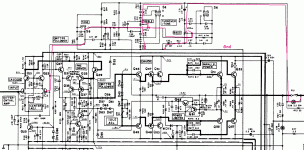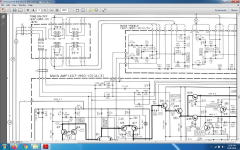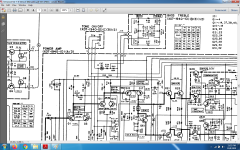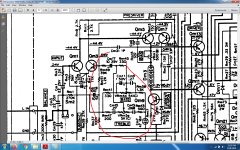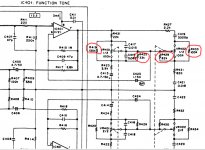I'm not terrible with math either...So i value your input as you can put it in words that guys like me can understand easily.Clearly most folks here do not want to think in terms of math. 🙁
Here's an active feedback tone control using Anti-log potentiometers.Some say it's neither Baxandal nor James so i wouldn't know exactly what to call it... https://www.diyaudio.com/forums/ana...hones-amplifier-equalization.html#post6324926
ESP pointed out that you can change a linear pot into log or antilog pot here:
ESP - A Better Volume Control
Yes, it is the most popular type of tone controls in the many Japanese amplifiers, they use it in the NFB of amplifier (mostly) or in the NFB of preamplifier.
But there is not any information about it on the net, I search that for years and years...
Anti-log pots here looks logical, yes.
Yes, it is the most popular type of tone controls in the many Japanese amplifiers, they use it in the NFB of amplifier (mostly) or in the NFB of preamplifier.
But there is not any information about it on the net, I search that for years and years...
Anti-log pots here looks logical, yes.
Perhaps I can help here. I have a circuit diagram and user manual of my (still working!!) Sansui AU-555A amplifier.
Do not know if things are still under copy right so if you
are interested....... send me a pm.
Thanks JoeAlders, I have many service manuals with that type of tone controls, but still don't know many things about them, and learning.
I can't agree. Nearly all Japanese amplifiers I have ever seen use Baxandall tone controls. I once found a James control in a Rotel 610 and nearly fell over in amazement, and the only place I've ever seen a tone control entirely in the feedback network was the treble control of the Radford SC-22. And you certainly can't put them in the feedback network of a power amplifier.Yes, it is the most popular type of tone controls in the many Japanese amplifiers, they use it in the NFB of amplifier (mostly) or in the NFB of preamplifier.
ejp: I guess you never came across any Kenwood amps (KA-1000) for instance, or the like, which used those types of "feedback" tone controls.
They ARE out there. 😉
They ARE out there. 😉
...circuit diagram ....Sansui AU-555A amplifier.
Do not know if things are still under copy right....
Readily available on the web.
Sansui AU-555A Solid State Stereo Control Amplifier Manual | HiFi Engine
....Nearly all Japanese amplifiers I have ever seen use Baxandall tone controls...
A majority of MONO hi-fi used James or similar. With the rise of STEREO, the poor tracking of audio-taper pots led to most hi-fis using LINear in the Baxandall connection.
...the only place I've ever seen a tone control entirely in the feedback network was the treble control of the Radford SC-22. And you certainly can't put them in the feedback network of a power amplifier.
ejp: I guess you never came across any Kenwood amps (KA-1000) for instance, or the like, which used those types of "feedback" tone controls.
Tone all in line-amp NFB is seen in Dynaco and in QUAD.
There's a whole family of hi-fi boxes using tone in POWER AMP NFB loop. A couple very careful high-end designs (eg KA1000), and a lot of cut-cost boxes for undemanding users. Another 90 degrees phase shift *only* 1kHz-10kHz is not really a tough loop problem with modern transistors.
Attachments
Last edited:
I had it.The best amp i ever listened to, compared to anything i listened up to 60 000 pounds nowadays amps.This is no joke! And Kenwood made even better amps than KA-1000!ejp: I guess you never came across any Kenwood amps (KA-1000) for instance, or the like, which used those types of "feedback" tone controls.
They ARE out there. 😉
At the same time, from a purely technical perspective that tone stack was measured and revued as a bit nonlinear in its action with one of the settings, but you can bypass it at anytime if you don't like it :
Kenwood KA-1000 Integrated Amplifier Review price specs - Hi-Fi Classic
By the way, that amp has something very interesting: the sound passes all the time through a 4066 switch and that remembered me of the fact that every single time i removed a 4066 switch from the signal path , the sound wasn't as pleasing as before...I don't know if it was because of the other mods i did to some of the equipment or if the 4066 is actually adding something pleasing to the sound.Yet KA-1000 is by far the most neutral amp i ever heard, a true wire like amp...
Last edited:
there's another kenwood model using almost the same tone stack ka-9x. and a simplified version ka-7x and also a very interesting very low impedance version indicated to me by user olddiy , kr5030 .You might like the ka-9x schematic as it contains some of the best features found in L-02a and the turnover settings of ka-1000, but the true beasts of the series, the L-02a, l-08m and l-06m have no tone control at all.There's a whole family of hi-fi boxes using tone in POWER AMP NFB loop. A couple very careful high-end designs (eg KA1000), and a lot of cut-cost boxes for undemanding users. Another 90 degrees phase shift *only* 1kHz-10kHz is not really a tough loop problem with modern transistors.
Unfortunately the L-06m schematic is nowhere to be found although it's the best amp kenwood ever did and even better than the best later Accuphase amps...
Attachments
Last edited:
Many Japanese amplifiers use that type of tone controls in NFB of the power amp (in the integrated amplifier or receiver. But I am not sure do they use Log or Lin potentiometers.
In some Pioneer amps form early 90's they put some resistors in parallel to pots, so I guess that could be Lin pots. Those amps are from series A, i will find some and put picture here.
Baxandall tone controls, with Lin pots, are often used in Marantz older amps.
In some Pioneer amps form early 90's they put some resistors in parallel to pots, so I guess that could be Lin pots. Those amps are from series A, i will find some and put picture here.
Baxandall tone controls, with Lin pots, are often used in Marantz older amps.
I stole some antilog potentiometers from two scraped amps i have, the marantz pm62 and harman kardon 645vxi.They both have active tonestacks and antilog potentiometers.I found no evidence of what type the kenwood real pots were as i sold the KA-1000 a long time ago...they were probably the same antilog type .
Here is Pioneer A44 integrated amp, with those type of tone controls.
Tone stack here is in the NFB of preamplifier, but principle is the same as in the NFB of power amp (in integrated amplifier or receiver).
(This Pioneer tone stack is used in many of their models, A series, sometimes in the this NFB tone controls, and sometimes as the passive tone controls.)
Those additional resistors with potentiometers make me believe that those pots are Linear?
Tone stack here is in the NFB of preamplifier, but principle is the same as in the NFB of power amp (in integrated amplifier or receiver).
(This Pioneer tone stack is used in many of their models, A series, sometimes in the this NFB tone controls, and sometimes as the passive tone controls.)
Those additional resistors with potentiometers make me believe that those pots are Linear?
Attachments
Last edited:
Denon DRA-55 receiver did the same thing, Tone controls in the amplifier NFB loop.
pioneer SX-780 used linear pots and a passive layout driven by a gain of 44 op amp into the power amp gain of 22 made it rather easy to convert the preamp to 6922 Tubes.
pioneer SX-780 used linear pots and a passive layout driven by a gain of 44 op amp into the power amp gain of 22 made it rather easy to convert the preamp to 6922 Tubes.
@PRR :
"Readily available on the web.
Sansui AU-555A Solid State Stereo Control Amplifier Manual | HiFi Engine"
Thanks for supplying this link. Much appreciated! 🙂
"Readily available on the web.
Sansui AU-555A Solid State Stereo Control Amplifier Manual | HiFi Engine"
Thanks for supplying this link. Much appreciated! 🙂
Yes, Nigel that makes sense! So linear is the way to go. BTW I am designing a passive Baxandall tone control
Not such a thing.
It is either an active Baxandall or a passive James tone control.
There is not a thing such as a square circle. 🙄
EDIT: and Baxandall is a unity gain stage (when set flat)
Those Japanese thingies adding a tone control inside a power amp NFB loop are a cheap kludge to save *one* transistor (all it takes for a true Baxandall circuit) and MESS with Power Amp frequency response and stability.
Once stabilized, it´s a terrible idea to mess with *power amp* NFB which has far nobler tasks to accomplish.
Ugh! 🙄
Last edited:
Those japanese thingies were a lot of them and none of them suffered of any stability problems...it took me a week to play in spice with those tonestacks to figure out what you really need to look after.The only real problems is the dependence of the output volume to some turnover settings, especially if they are placed in the mids section as you start to hear them better.On the other hand they can provide a pretty linear response in all the audio bandwidth with just bass and trebble pots.Those Japanese thingies adding a tone control inside a power amp NFB loop are a cheap kludge to save *one* transistor (all it takes for a true Baxandall circuit) and MESS with Power Amp frequency response and stability.
Once stabilized, it´s a terrible idea to mess with *power amp* NFB which has far nobler tasks to accomplish.
Ugh! 🙄
Agree with dreamth, I never have stability problems with those type of amplifiers.
With those type of tone controls, integrated amps (and receivers) have just power amplifier, shorter signal path with no preamplifier (except RIAA of course).
Shorter signal path is usually better sounding.
With those type of tone controls, integrated amps (and receivers) have just power amplifier, shorter signal path with no preamplifier (except RIAA of course).
Shorter signal path is usually better sounding.
- Home
- Source & Line
- Analog Line Level
- Bass-Treble potentiometers in Baxandall tone control
